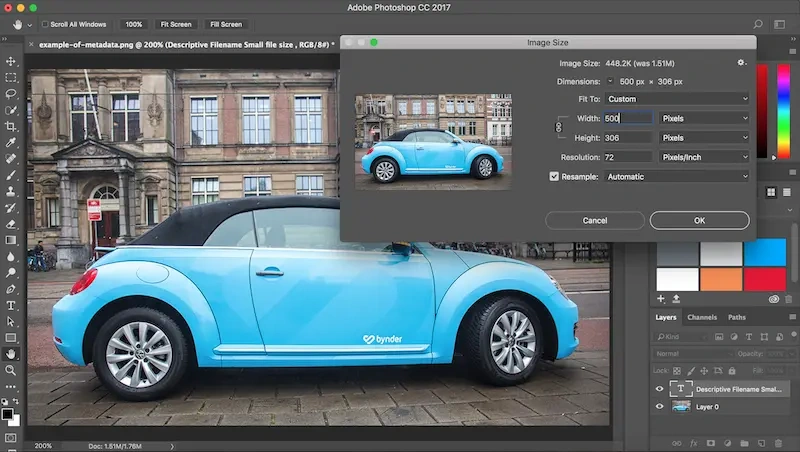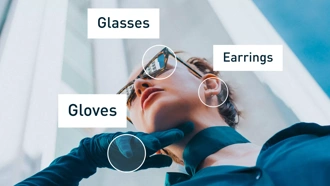How can you optimize your digital files for findability on the web?
Chances are your digital assets are indexed in a variety of places on major search engines across the web. This can range from your company website, blog, knowledge base, resource libraries, social media posts, landing pages, and more.
Some common asset types that get published frequently on the web include PDF, JPG, PNG, MP4, and MOV. The content produced in these file formats could include things like white papers, product shots, interviews, how-to guides, infographics, news articles, research reports, employee headshots, and illustrations. You may spend a great deal of time optimizing the page that these file formats live on, but did you also know that you can optimize the individual digital files as well?
This article will help you to optimize the digital files that are found within web pages, rather than SEO optimization techniques in general.
Why should you care about optimizing your digital files?
Metadata that gets keyed into various systems in the digital ecosystem of your company has more than likely been keyed in before. When you have many systems on your toolbelt, it may be difficult to easily recognize what has happened inside of each tool individually, let alone see the bigger picture. It’s also very easy to get stuck in the weeds of your own team’s bubble—who cares that Mark two cubes over has to rekey my data? I’m too busy to care about that.
Make the most of automation
Aim to automate where you can and save your time for more important tasks. If a digital system or tool is able to automate file-naming conventions for you based on already-entered metadata, then that is a win for you, your team and your organization. What’s more, each time you do not have to manually rekey data, you are also reducing the opportunity for error.
Reduce the burden of repetitive work
What if you could save one hour every week by not having to type in information that already exists, or having to rename a file so that it is SEO-friendly? Some digital asset management systems have features that allow you to automatically create SEO-ready file-names upon download. These digital files are then ready-to-go and reflect optimization best practices for your organization. In addition, you can also control the output format, size, and dimensions for digital files, which means that you can always grab the most optimized version for your published work.

Instead of downloading a source file, opening photoshop, and making adjustments to your images before you publish them, having compressed, ready-for-web files ready to go can be a lifesaver when dealing with monotonous work.
A compressed image is very important for site-speed—a noteworthy SEO ranking factor. Being able to download compressed, ready-to-go images from your DAM can also save a lot of time for your company.

Google recommends keeping file sizes compressed and light because there is "less competition for the client's bandwidth, and the faster the browser can download and render content on the screen.” Full recommendations for optimizing images for search from Google can be found on PageSpeed Tools: Insights.
So, what is effective SEO optimization for digital files?
You might be asking yourself, what is good digital file optimization? There are quite a few ways you can optimize the files that live inside your landing pages, blogs, and websites before you ever pull them into your CMS or publishing tool. This includes checking things like:
- Descriptive filenames that are all lowercase and use dashes instead of underscores
- Light image dimensions, dpi, and sizes for fast loading
- Whether the metadata has been stripped
- What are the special considerations for different file types?
Descriptive filenames
Make sure that all of your digital files have descriptive filenames, utilizing best practices such as lowercase characters and dashes instead of underscores. This can be useful for searching on your site, but also if a Google or Bing user decides to use regular expressions such as '*.PDF' and 'Blog Best Practices,' resulting in your PDF 'blog-best-practices.pdf' being a much more likely top search result!
Aside from that, file-names that are all alphanumeric, non-descriptive names leave nothing but a breadcrumb trail for the end user who may end up snagging your photo or document for use elsewhere.
You’ve likely downloaded files from a site before that were unfortunately auto-named as 'download.jpg' or 'image.jpg,' meaning that the filename provides little to no context of what the file actually is. For best results, use descriptive names that outline who created the asset, a product sku, and/or an important subject keyword.
Light image dimensions, dpi, and sizes for fast loading
A heavy page with lots of high-res images can lead to people clicking away before the site has even loaded. Furthermore, it may negatively affect your ranking in major search engines. Consider keeping file sizes light, because you may have viewers who have less than ideal internet connections. Keeping them light enables them to view your content quickly, even on a poor connection.
What about the metadata?
Google says it right there in broad daylight: “REMOVE UNNECESSARY IMAGE METADATA.” Yet it could be argued that this is not always relevant. They recommend stripping metadata that is unnecessary for faster load times, but this is also important information that could be indexed in the future, so you do have some considerations to make here.
Is it private metadata that the public doesn’t need to know about? Have you conducted A/B testing to see if there is a difference between stripped metadata images and non-stripped?
The Embedded Metadata Manifesto is devoted to NOT stripping this 'unnecessary' metadata and also gives readers guidelines for creating and storing metadata so that important information is always with the digital files.
Fast load times are important, but findability is even more so, and metadata can provide useful information about the provenance of digital files. Consider these factors carefully when thinking about stripping metadata, and remember that metadata is already indexed by Google Image search—so take the recommendation of stripping this data with a grain of salt.
Optimizing Specific File Formats for SEO
Finally, if you have questions about which file formats are most effective and how to optimize each type for findability, check out these resources:
- How to Optimize PDFS by eConsultancy suggests tips including descriptive filenames for files, as well as linking back to your website from logos and copy inside the PDF
- How to Optimize Video by Rigor has a great guide on optimizing the actual structure of your video files for fast streaming
- How to Optimize Images by Google has an excellent decision tree available from Google’s web resources pertaining to image resources specifically
Putting it all together
Anita Paz's article In search of Meaning: The Written Word in the Age of Google reveals that many people don’t look past the first page of results when conducting searches. Therefore, you should always aim for your content to show up first to maximize your potential audience. Think of this as 'above the fold' content, but for the search engine!
Also, note the fact that not all searches are text-based. For image search, you’ve also got a lot to consider so start by optimizing the building blocks of your pages and don’t forget to also look into schema.org markup, pagespeed insights, and SEM optimization best practices.
For more information on optimizing for the web, check out Jack Saville’s Digital asset management and SEM.












